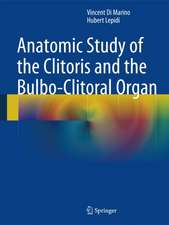Positive Family Therapy: The Family as Therapist
Autor Nossrat Peseschkian Traducere de Martha Rohlfingen Limba Engleză Paperback – dec 1985
Preț: 386.00 lei
Nou
Puncte Express: 579
Preț estimativ în valută:
73.86€ • 77.32$ • 61.12£
73.86€ • 77.32$ • 61.12£
Carte tipărită la comandă
Livrare economică 05-19 aprilie
Preluare comenzi: 021 569.72.76
Specificații
ISBN-13: 9783540157687
ISBN-10: 3540157689
Pagini: 352
Ilustrații: X, 340 p.
Dimensiuni: 133 x 203 x 18 mm
Greutate: 0.37 kg
Editura: Springer Berlin, Heidelberg
Colecția Springer
Locul publicării:Berlin, Heidelberg, Germany
ISBN-10: 3540157689
Pagini: 352
Ilustrații: X, 340 p.
Dimensiuni: 133 x 203 x 18 mm
Greutate: 0.37 kg
Editura: Springer Berlin, Heidelberg
Colecția Springer
Locul publicării:Berlin, Heidelberg, Germany
Public țintă
ResearchCuprins
List of Stories.- A Story for the Positive Process: The Dream.- Six Theses of Positive Family Therapy.- I. Introduction to the Theory of Positive Family Therapy.- 1. The Situation in Science, Religion, Education, and Psychotherapy.- 2. What Is “Family Therapy”?.- 3. What Does “Positive Family Therapy” Mean?.- 4. Guidelines for the Reader.- II. Transcultural Psychotherapy (The East-West Concept).- 1. Social Changes and the Image of Man.- 2. Practical Aspects of the East-West Concept in Family Therapy.- III. From Family Therapy to Positive Family Therapy.- 1. The Family as Hell.- 2. The Family as Heaven.- 3. The Family as Fate.- 4. Forms of the Family.- 5. The Family Equilibrium.- 6. Family Therapy: Who Should be Treated?.- 7. Family or Clinic.- 8. The Development of Family Therapy.- 9. What Does Positive Family Therapy Deal With?.- IV. The Tools of Positive Family Therapy.- 1. The Three Pillars of Positive Family Therapy.- 2. The Positive Starting Point.- 3. What is “Positive Family Therapy”?.- 4. The Positive Image of Man — Unity in Diversity.- 5. The Basic Capabilities in the Literature.- 6. Possibilities for Reinterpretation.- 7. Practical Applications of the “Positive Interpretations”.- 8. Aids for Changing One’s Perspective.- 9. What Are “Concepts”?.- 10. Positive Family Therapy Does Not Remove Anything.- 11. The Patient as Therapist.- 12. The Positive Procedure in the Therapeutic Process.- V. Conflict Contents and Conflict Dynamics.- 1. Four Forms of Dealing with Conflict and How They Work.- 2. The Four Forms of Dealing with Conflict, as Used in Positive Family Therapy.- 3. The Four Model Dimensions.- 4. The Four Forms of the Model Dimensions in Positive Family Therapy.- 5. Actual Capabilities.- 6. Microtraumas: The So-called Little Things.-7. Making Contents Concrete.- 8. The Significance of the Actual Capabilities.- 9. Actual Capabilities as Signs of Transcultural Differences.- 10. Using the Differentiation Analytical Inventory (DAI).- 11. Actual Conflict and Basic Conflict.- 12. The Three Stages of Interaction.- VI. The Five Steps in Positive Family Therapy and How They Operate.- 1. The Stage of Observation/Distancing.- 2. The Stage of Taking Inventory.- 3. The Stage of Situational Encouragement.- 4. The Stage of Verbalization.- 5. The Stage of Goal Expansion.- 6. The Strategy of Positive Family Therapy.- 7. The Relationships between Therapeutic Models.- 8. Positive Family Therapy: Language and Social Strata.- VII. Practice of Positive Family Therapy.- 1. Concepts and Their Application in Positive Family Therapy.- 2. Concepts in Therapeutic Work: The Change of Perspective.- 3. Stories and Sayings as Aids for Changing One’s Perspective.- VIII. Concepts and Their Effects in Positive Family Therapy.- 1. Frigidity: The Ability to Say No with One’s Body.- 2. What Do Stomach Troubles Have to Do with Frugality?.- 3. My Parents Raised Me Wrong.- 4. Adiposity.- 5. A Heart Neurosis.- 6. What Will People Say?.- 7. Literary Concepts: Who is Your Favorite Author?.- IX. Family Tradition and Identity.- 1. Traditional Neurosis.- 2. Hanging onto Concepts or Changing Them.- 3. The Undecided Generation Conflict.- 4. Till Death Do You Part.- 5. The Wrong Way.- 6. Delegated Concepts.- 7. The Old Prohibition.- 8. Dangerous Tea.- 9. Can One Hurt Other People?.- 10. The Redeemer.- 11. The Concept Family Tree.- 12. Tradition of Symptoms.- Epilogue.- Reviews of The Family as Therapist: New Strategies for Positive Family Therapy.














